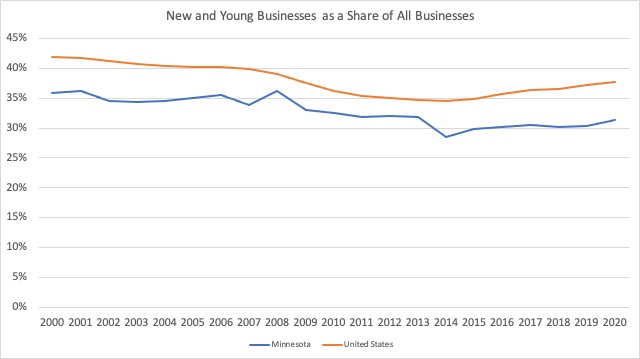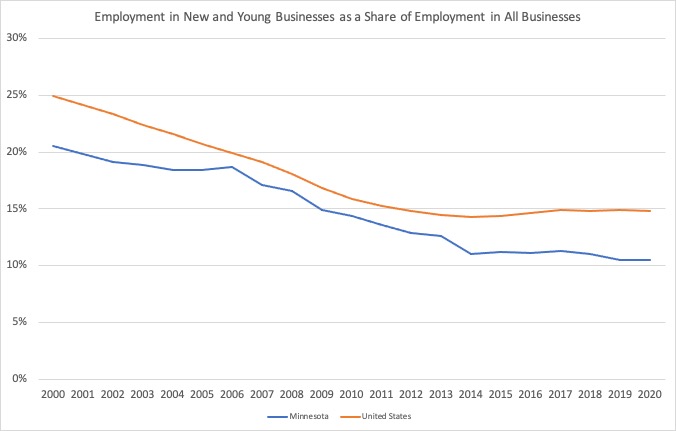Minnesota is one of the top worst performing states when it comes to new business creation
The coronavirus induced recession has brought with it numerous challenges. The recession has also, however, spurred entrepreneurship. This is a trend that Minnesota needs to capitalize on as I have written before. But in order for that to happen, significant reforms are needed. This is because, despite our good business survival rate, our state does poorly when it comes to business creation.
As explained by DEED Commissioner Steve Grove,
According to data from the U.S. Labor Department, Minnesota ranked 48th in the rate of new entrepreneurs per capita in 2019 — and has only exceeded the national average for four years of the last 20. We also rank low on startups that lead to early job creation, coming in 40th last year.
Generally, Minnesota can benefit a lot by making itself a friendlier state for business. Historically, and when compared to other states, Minnesota ranks significantly low on business formation. Let us take a look, for instance, at the data on new and young businesses.
New and Young businesses
New and young businesses (generally defined as those businesses aged 0 to 5 years) are a huge part of any economy. They significantly contribute to job creation and economic growth. However, Minnesota performs very poorly when it comes to incentivizing new businesses.
According to data from the Bureau of Labor Statistics (BLS), between March 2019, and March 2020, Minnesota was among the top 15 states with the lowest share of new and young businesses. Minnesota additionally performed significantly below the national average.

This is nothing new to 2020. Minnesota has consistently ranked well below average when it comes to business creation, as shown by the graph below. On average, trends in business creation in Minnesota mirror the nation.

Source: BLS
The same can be seen when it comes to employment in new and young businesses as a share of employment in all businesses. At both the state and national level there has been a general decline in employment in new businesses as a share of all employment. However, Minnesota has a significantly smaller share of its jobs in new and young businesses compared to the national average, a sign of low levels of entrepreneurship.

Source: BLS
As I have written before, the fact that our survival rate is so high means we are positioned to benefit greatly from an increased rate of business creation. However, as can be seen from the data, Minnesota has a long way to go.